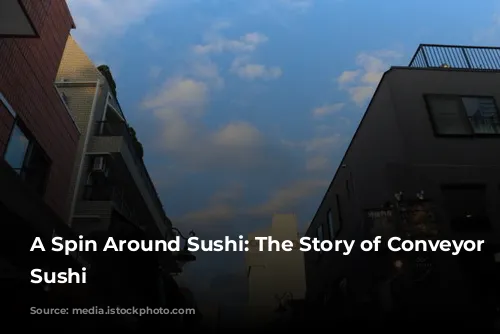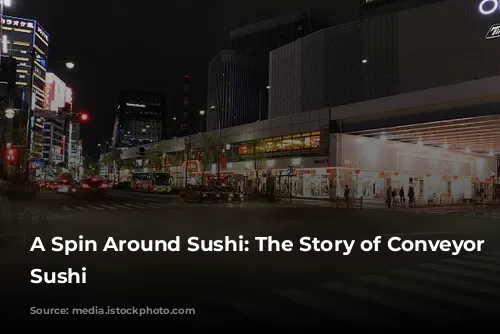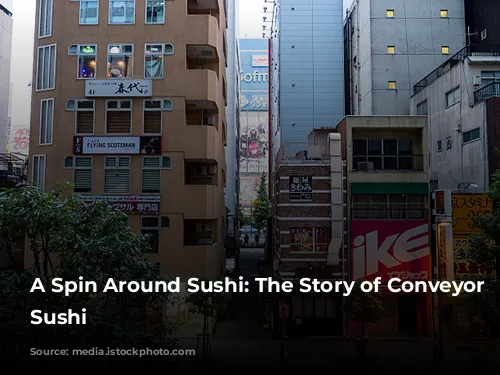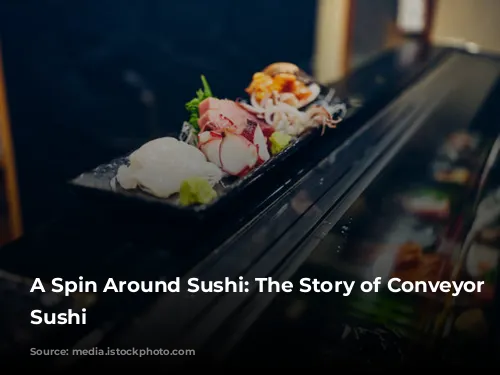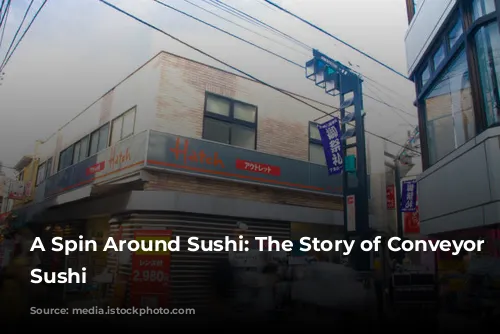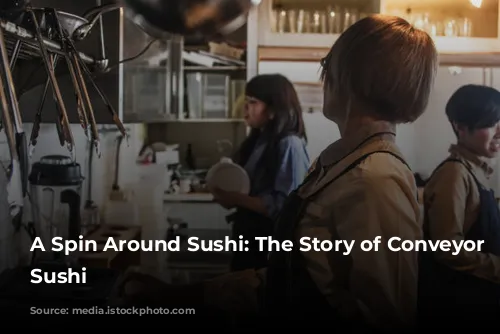Conveyor belt sushi, also known as rotation sushi or the sushi train in some parts of the world, is a unique and popular dining experience that originated in Japan. Imagine a delicious journey through a restaurant where plates of sushi glide past you on a continuous looping conveyor belt. This innovative dining concept has become a global phenomenon, capturing the hearts of sushi enthusiasts worldwide.
A Sushi Journey on a Moving Belt
Conveyor belt sushi restaurants offer a delightful way to enjoy fresh sushi. Plates laden with various sushi creations travel along a winding belt, stopping by every table and seat. The bill is calculated based on the number and types of plates you indulge in. Some establishments have adopted variations on this theme, using charming miniature wooden “sushi boats” sailing through tiny canals or miniature train cars zipping along tracks.
The conveyor belt is the star of the show, constantly presenting an array of delectable options. The selection is not limited to sushi; you can also find karaage, edamame, salads, soups, fruits, desserts, and other culinary delights. Some restaurants even utilize RFID tags or other systems to ensure freshness by removing plates that have been circulating for too long.
Finding Your Perfect Plate and Dining Delights
If you’re craving a specific type of sushi or dish, you can place a special order. Many restaurants provide speaker phones or modern touchscreen displays for this purpose. Small orders might be placed on the conveyor belt with a clear marker indicating they’re reserved. Large orders are often brought to your table by an attentive server.
Condiments are readily available for your enjoyment, including pickled ginger, chopsticks, soy sauce, and small dishes for the soy sauce. Wasabi may be found near your seat or on the conveyor belt. Complimentary tea and ice water are usually offered, with cups stacked on a shelf above the conveyor belt and tea bags or green tea powder at your table. A hot water faucet is also provided for your tea-making convenience.
Plates, Prices, and Payment
Plates come in various colors, patterns, and shapes to reflect their prices, which range from 100 yen to 500 yen (or the equivalent in your local currency). Plain plates often indicate more budget-friendly items, while decorative plates signal a higher price. The most expensive items often grace gold-colored plates. Some restaurants offer fixed pricing, with every plate costing the same amount. Attendants are available to assist you with counting your plates, or you might find a counting machine that automatically tallies your delicious choices.
Behind the Sushi Belt: Engineering and Innovation
The conveyor belt sushi system is a marvel of engineering. The thin, narrow conveyor is specifically designed to fit comfortably within the confines of a typical sushi restaurant. Most of these conveyors are manufactured in Ishikawa Prefecture, Japan, where meticulous craftsmanship is a tradition.
The standard conveyor uses a unique plastic crescent top chain that runs on its side. This design enables the conveyor to navigate the tight corners commonly found in these restaurants. Major chain companies can customize their conveyors with different pin materials, plate shapes, and surface treatments. Innovative designs include chainless conveyors for quieter operation, multi-tiered conveyors for maximizing space, and high-speed lanes for quick delivery of special orders.
A Sushi Revolution: From Humble Beginnings to Global Popularity
Conveyor belt sushi was born from the ingenuity of Yoshiaki Shiraishi, who, in 1958, opened the first conveyor belt sushi restaurant, Mawaru Genroku Sushi, in Higashiosaka. He came up with the idea after witnessing beer bottles being transported on a conveyor belt at an Asahi brewery. Shiraishi’s invention revolutionized the sushi dining experience.
Initially, all customers faced the conveyor belt, but this setup wasn’t ideal for groups. Later, tables were added at right angles, allowing larger parties to enjoy their sushi together. Conveyor belt sushi experienced several surges in popularity, beginning in the 1970s with a restaurant at the Osaka World Expo. The 1980s brought another wave as dining out became increasingly popular. In the late 1990s, the economic bubble burst, leading to a boom in affordable dining options, including conveyor belt sushi.
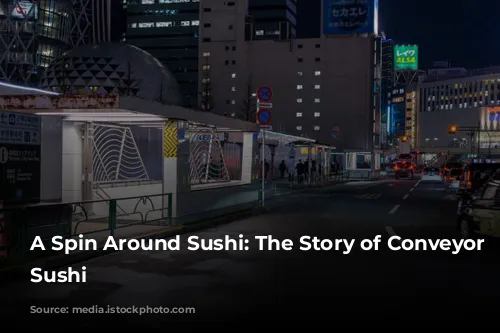
Sushi Terrorism: A Dark Chapter
In recent times, conveyor belt sushi has unfortunately been marred by incidents of unhygienic behavior, dubbed “sushi terrorism“. Some patrons have been arrested for deliberately licking or drinking from items on the conveyor belt. These acts, often captured on video and shared online, have shaken public trust and raised concerns about food safety in these restaurants. This unfortunate chapter underscores the importance of respectful behavior and maintaining a safe and hygienic environment for all diners.
